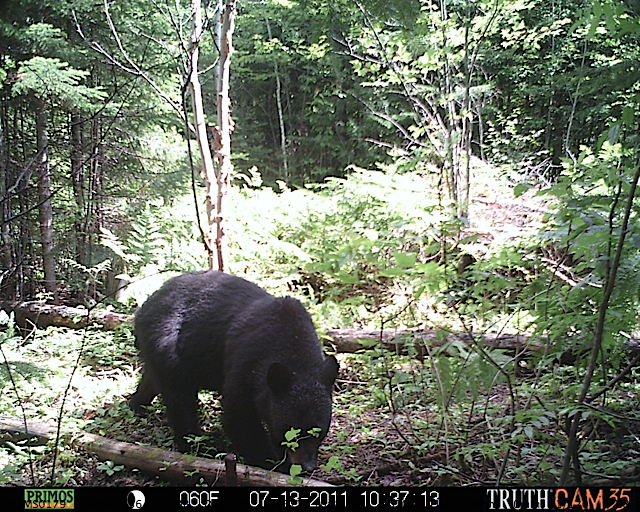
Without a remote wildlife camera, black bears can be difficult subjects to photograph, particularly if the objective is to obtain photos, like these, of the animals in the wild rather than at dump sites or places where bears are regularly fed. For one thing, it's not easy to find a bear, and if you do happen upon one in the wild, the chances are very good that the animal is not going to stay there long enough for you to get some good pictures. Because of their color, which is generally (but not always) black, they can be harder than other wildlife subjects to expose properly.
Lastly, while I have made a point to provide counterarguments to the undeserved reputations that bears have for being paricularly dangerous animals, the facts are that they are quite powerful and, under some circumstances, they can be dangerous. One of these circumstances is getting too close to the animal to impinge upon its personal space, which might be the case when a photographer is looking for a closeup of a bear. Improved technology in zoom lenses helps, but you can't beat a wildlife camera for being able to capture images of the animal in its natural environment.
For the sake of full disclosure, I have put some apples down on the ground on a couple of occasions. Although I put them down with deer and moose in mind, I have learned that black bears like them. Also, my compost includes food scraps, as we know, because I set the camera up there every now and then. But the bears were in this clearing before I ever set eyes upon it, so the environment remains natural and I have every reason to believe that my camera would have caught them here regardless.